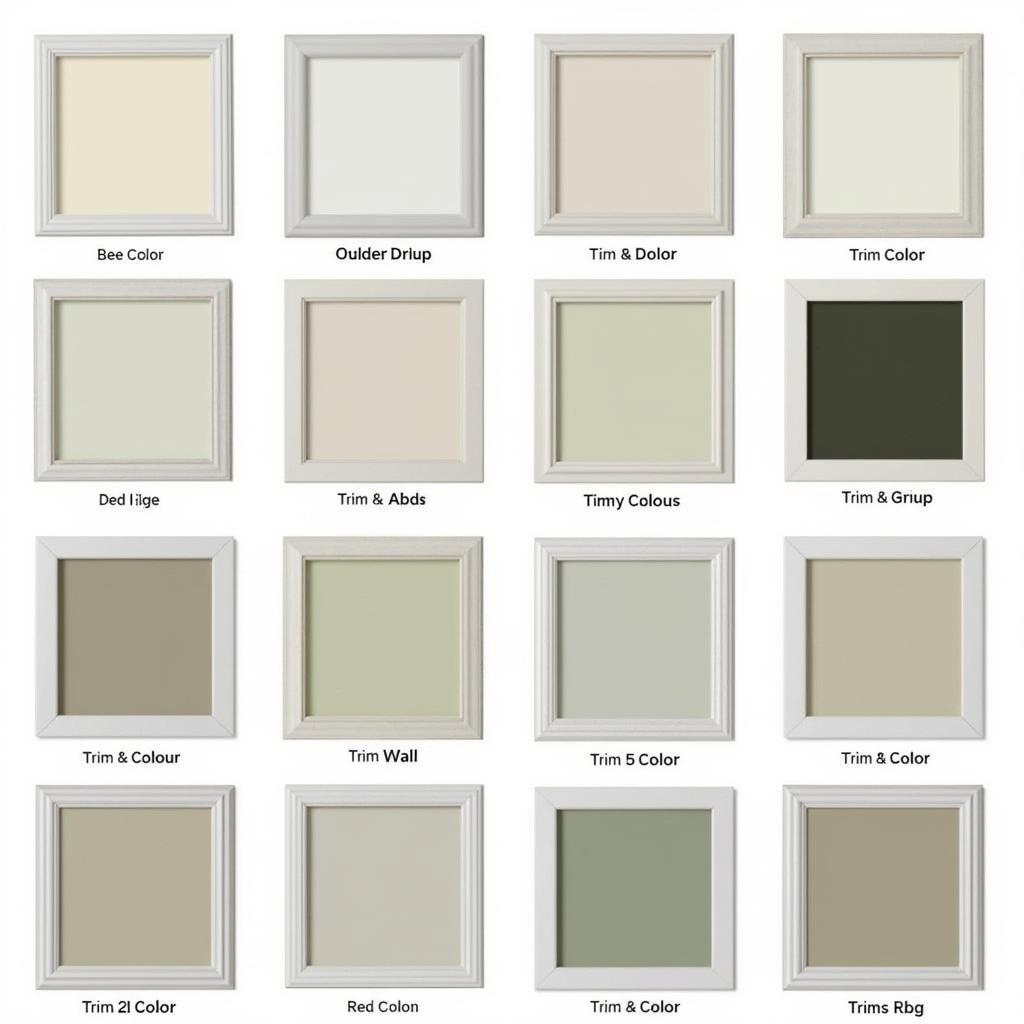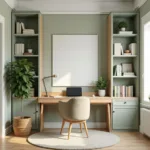Choosing the right trim color can make or break your home’s exterior or interior design. It’s a detail that often gets overlooked, but the trim is the frame for your walls, doors, and windows, impacting the overall aesthetic significantly. So, how do you navigate the world of trim colors and select the perfect hue for your space? This comprehensive guide will equip you with the knowledge and inspiration you need to make the best choice.
Picking the right trim color can feel overwhelming. Should it match the walls? Should it contrast? Do you have to use white? This guide will explore various options, considering your wall color, architectural style, and personal preferences. Choosing the best trim color is essential for a harmonious and polished look. We’ll discuss classic choices and bolder options to help you achieve the desired effect. Learn how to make off white color to create a subtle yet sophisticated look for your trims.
Understanding the Role of Trim
Trim serves both a functional and aesthetic purpose. It covers gaps and imperfections, protects your walls, and adds a finishing touch to your space. Aesthetically, trim provides definition and can dramatically alter the perception of a room. Choosing trim color strategically allows you to highlight architectural details, create visual interest, and enhance the overall ambiance. A well-chosen trim color can tie the elements of a room together or create a striking contrast for a more dramatic effect.
What color to paint stair railing to complement your trim? This is another important decision that can impact the overall look of your staircase and hallway. Coordinating the railing color with your trim can create a harmonious flow.
Factors Influencing Trim Color Choice
Several factors play a crucial role in selecting the ideal trim color:
- Wall Color: The relationship between your wall color and trim color is fundamental. Do you want a subtle, monochromatic look, or a bold contrast?
- Architectural Style: The style of your home can influence trim color choices. Traditional homes often benefit from classic white or neutral trims, while modern homes can handle more adventurous pairings.
- Personal Preference: Ultimately, your personal taste should guide your decision. Do you prefer a calming and cohesive palette or a vibrant and dynamic space?
- Lighting: Natural and artificial light can significantly affect how colors appear. Consider how lighting impacts your chosen trim color in different areas of your home.
 Choosing Trim Color for Various Wall Colors
Choosing Trim Color for Various Wall Colors
Exploring Trim Color Options
From classic whites to bold blacks and everything in between, the possibilities are endless. Let’s explore some popular trim color options:
- Classic White: White trim is a timeless choice, offering a clean, crisp look that complements virtually any wall color. It’s a versatile option that works well with various architectural styles.
- Subtle Neutrals: Cream, beige, and gray are excellent alternatives to white, providing a softer, more nuanced look. These colors can create a sense of warmth and sophistication.
- Bold Contrasts: For a dramatic effect, consider a contrasting trim color. Black trim against a light wall creates a modern and striking aesthetic, while a brightly colored trim can add a touch of whimsy.
- Matching the Walls: Creating a monochromatic look by matching the trim color to the wall color can create a seamless and cohesive space, especially effective in smaller rooms.
Do you know what the color on your toothpaste means? While it may seem unrelated, understanding color symbolism can influence your design choices and create a cohesive aesthetic throughout your home.
Matching Trim to Your Wall Color
Here’s a step-by-step guide to choosing trim color based on your wall color:
- Identify Your Wall Color Undertones: Is your wall color warm or cool? This will help you narrow down your trim color options.
- Consider the Desired Effect: Do you want the trim to blend in or stand out?
- Test Several Trim Colors: Paint small sections of your trim with different colors to see how they look in your space and under different lighting conditions.
Tips for Choosing the Perfect Trim Color
- Sample, Sample, Sample: Testing different colors in your space is crucial, as lighting and surrounding colors can significantly impact how a color appears.
- Consider the Sheen: The sheen of your trim paint can affect its appearance. High-gloss trim is often used for a more formal look, while satin or eggshell finishes are more versatile.
- Think Long-Term: Trim color is not something you’ll want to change frequently, so choose a color you’ll love for years to come.
If you’re wondering what color rims for a white car would look best, consider how the principles of contrasting and complementary colors can be applied to other design aspects.
Conclusion
Choosing the right trim color is a crucial element in creating a cohesive and stylish home. By considering your wall color, architectural style, and personal preferences, you can select a trim color that enhances your space and reflects your unique taste. Remember to test different colors and consider the sheen before making your final decision. How to choose trim color effectively involves careful planning and consideration, but the results are well worth the effort.
FAQ
- Should trim always be white? No, while white is a classic choice, many other trim colors can create beautiful and stylish results.
- Can I use the same color for trim and walls? Yes, creating a monochromatic look can be very effective.
- What sheen should I use for trim paint? Satin or semi-gloss are popular choices for trim.
- How do I choose trim color for an exterior? Consider the color of your siding, roof, and surrounding landscape.
- Can I paint my trim a different color than my doors? Yes, you can create various effects by using different colors for trim and doors.
- What’s the best way to test trim colors? Paint small sections of your trim with different colors and observe them in different lighting conditions.
- Should I consider the style of my home when choosing trim color? Yes, different architectural styles often benefit from specific trim color palettes.
Can I use writing gel as food coloring? While this might seem like a creative solution, it’s important to prioritize food safety and use appropriate materials for food preparation.
Common Scenarios and Questions
Scenario: I have light gray walls. What trim color would look best? Consider white, a slightly darker gray, or even a soft black for contrast.
Question: My home has a traditional style. Should I stick with white trim? While white is a classic choice for traditional homes, you can also explore other neutral colors like cream or beige.
Further Exploration
Explore our other articles on color selection and home design for more inspiration and guidance. Learn more about what color to paint stair railing and discover inspiring color combinations for your home.
Need help choosing the perfect trim color? Contact us! Phone: 0373298888, Email: [email protected], or visit us at 86 Cầu Giấy, Hanoi. We have a 24/7 customer support team ready to assist you.

